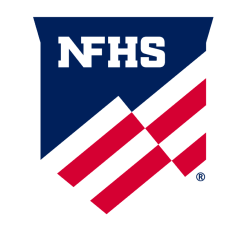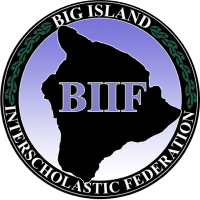INDIANAPOLIS, IN (March 11, 2022) — In consideration of expanded inclusivity, rules allowing securely affixed hair adornments such as beads and other devices were recently adopted for the 2022-23 high school spirit season.
The change allowing for such devices to be safely worn in the hair, which impacts Rule 2-1-5, is accompanied by another rule focused on increased risk minimization that disallows altered supports and/or braces from a manufacturer (Rule 2-1-11).
Collectively, those two focal points were among nine total rules changes recommended by the NFHS Spirit Rules Committee at its February 13-14 meeting in Orlando. Each of the revisions, many of which address ongoing efforts to minimize risk of injury to the sport’s participants, were subsequently approved by the NFHS Board of Directors.
“The NFHS Spirit Rules Committee continues to review and refine the safety rules for students in cheerleading and dance,” said James Weaver, NFHS director of performing arts and sports and liaison to the NFHS Spirit Rules Committee. “Over the past several years, significant progress has been made to make the rules clearer and, at the same time, reduce the risk of injury through progressive skills.”
The allowance of hair devices, accessories and other adornments, which includes beads, was done in an attempt to be more inclusive of the varying cultural and religious beliefs of participants. As part of the rules change, the Spirit Rules Committee noted the importance of having hair worn in a manner that is appropriate for the activity involved and that is securely affixed as to not present an increased risk of injury to the participants.
With its attention remaining on risk minimization, the Spirit Rules Committee adopted changes involving padding requirements in Rule 2-1-11. The change disallows supports and/or braces that are altered from the original design, production, and/or intended use of the manufacturer.
As part of the change to Rule 2-1-11, soft, non-abrasive and/or non-hardening supports, braces, soft casts and the like do not require additional padding if unaltered from the manufacturer’s original design. Additionally, changes to the rule clarify that hard and unyielding items, such as guards, casts, braces, etc., may be worn on the hand, wrist, forearm, elbow or upper arm if padded with a closed-cell, slow-recovery foam padding. The padding must be no less than one-half-inch thick if the participant is involved in partner stunts, pyramids or tosses.
The Spirit Rules Committee also adopted changes to Rule 3-3-5d, aligning braced release skills. Until this most recent adoption, there was no rule in place preventing a bracer from “walking” during a braced flip.
"With the change to Rule 3-3-5d, the bracer must remain stationary while supporting a flip inversion,” Weaver said. “This will increase safe activity on the bracer’s part and help them to remain firm on the ground and focused on the participant completing the skill in the air."
With the change to the rule included among inversions, Rule 3-3-5d now clearly states that braced flips in a pyramid are permitted provided bracer(s) are in a multi-based prep with a spotter and remain stationary.
Among the Spirit Rules Committee’s six other changes were clarifications of definitions for the terms “airborne” and “headspring,” and the allowance of stunting personnel sharing poms during mounts or dismounts (Rules 3-2-1 and 4-2-1). The committee also sought to introduce changes that lessen the degree of difficulty for skills related to inversions, release stunts and release tosses in Rules 3-3-5a, 3-5-4 and 3-5-5c.
A complete listing of the spirit rules changes will be available on the NFHS website at
www.nfhs.org. Click on “Activities & Sports” at the top of the home page and select “Spirit.”
According to the most recent NFHS High School Athletics Participation Survey, competitive spirit ranks ninth in participants for girls with 161,358 in 7,214 schools.










